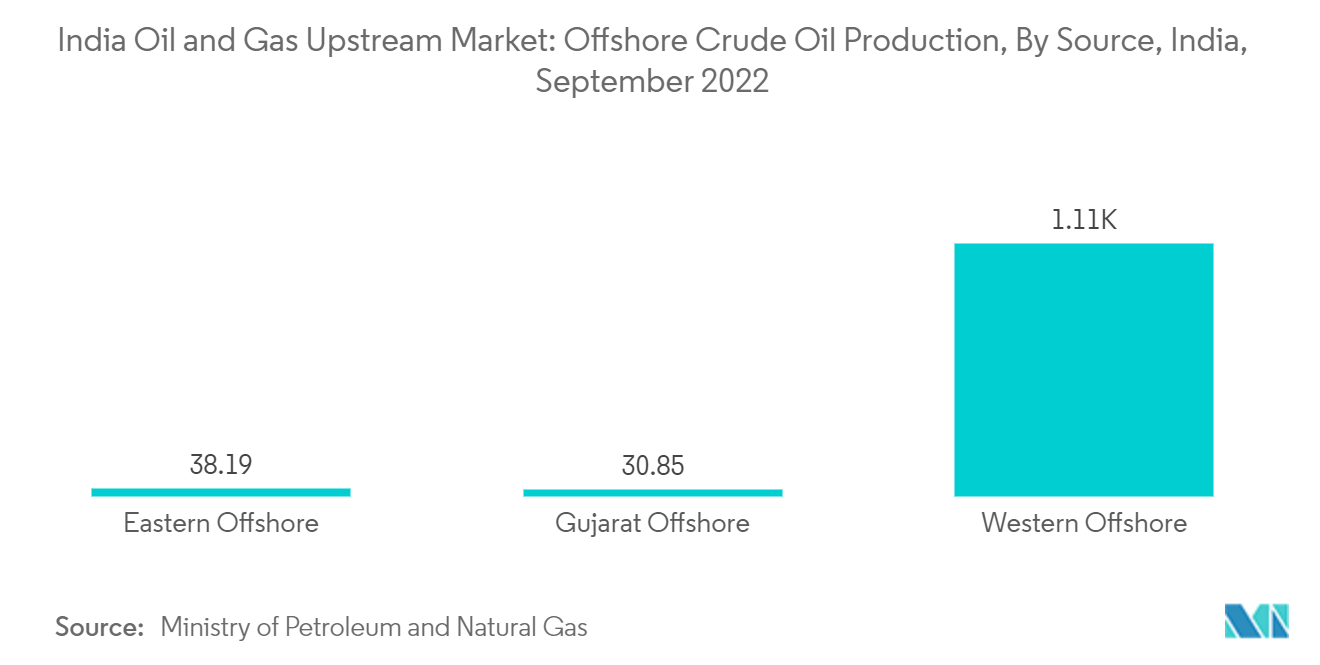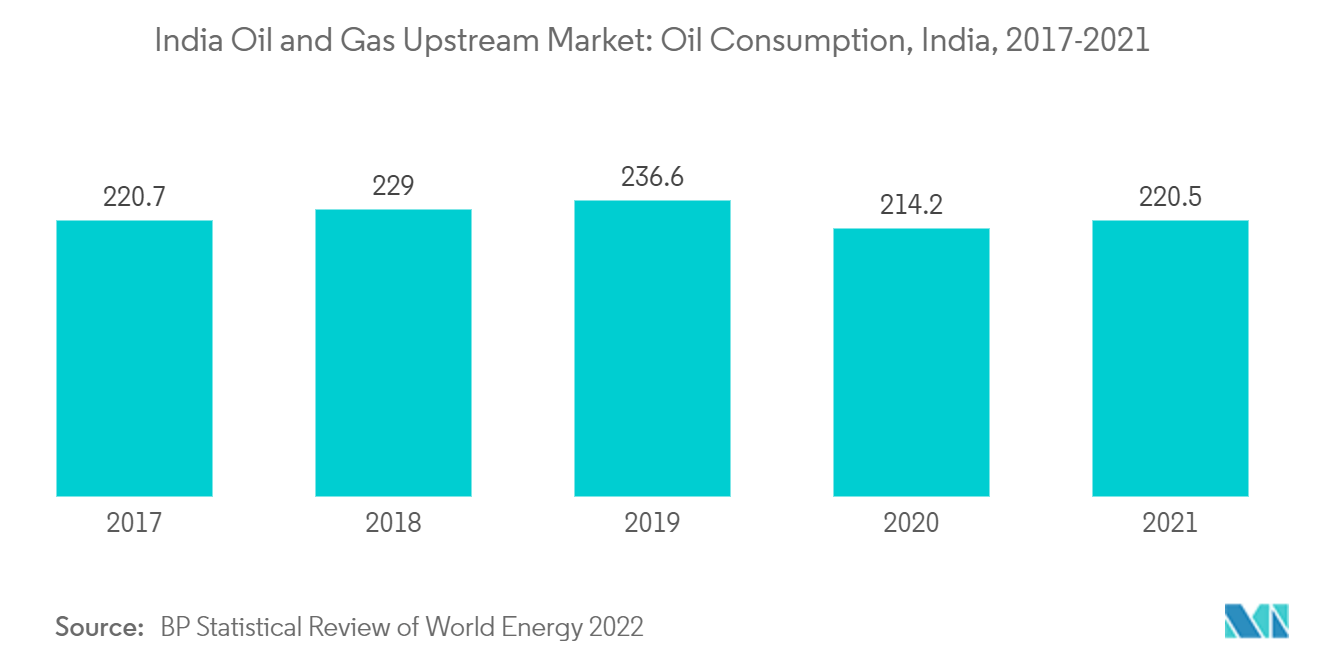Market Trends of India Oil and Gas Upstream Industry
This section covers the major market trends shaping the India Oil & Gas Upstream Market according to our research experts:
Offshore Production to Dominate the Market
- In May 2022, India produced nearly 2550.5 thousand metric tons of crude oil, of which offshore production accounted for around 1257.68 thousand metric tonnes (49.2%) of the oil produced and almost 68.3% of the gas produced in India. India has 26 sedimentary basins, of which only seven have commercial production of oil and gas. According to MOPNG, crude oil production from offshore increased by nearly 4.6% from May 2021, while natural gas production rose by almost 7.9% in the same period.
- The oil products market is expected to dominate the market due to its large share in the oil and gas business. Oil demand is also likely to remain higher than natural gas demand. However, the rate of growth in demand for natural gas is expected to be much higher, which is due to the government lead initiatives like the Urja Ganga gas project.
- In November 2022, the country launched a new licensing round in accordance with the India Open Acreage & Licensing Policy (OALP). The round will include 23 blocks and cover almost 220,000 square kilometers. A total of 15 blocks lie in ultra-deep waters; eight others are shallow-water acreages.
- According to the Ministry of Petroleum and Natural Gas, as of 2022, the offshore oil production in the eastern offshore region was 38.19 thousand metric tons; similarly, in Gujarat, offshore and the western offshore region was 30.85 and 1110.14 metric tons, respectively.
- Hence, offshore oilfields are expected to dominate the market due to economically viable gas basins being concentrated in the water bodies of the exclusive economic zone of India.

Increase in Oil Consumption to Drive the Market
- Oil Consumption in the country increased by 2.9% to 220.5 Million tonnes oil equivalent, in 2021 from 214.2 Million tonnes oil equivalent, in 2020. The steady increase in consumption is expected to be the most prominent driver in the forecast period.
- In 2021, Oil production became 619 thousand barrels/day, which decreased from 744 thousand barrels/day , in 2017. The decrease in production is consistent over the 2017 - 2021 period. Poor reservoir performance, high water cut, and human errors are the primary reason for the decline.
- Changes in the policies for exploration and production have led to some growth in the industry. Companies look prudent as changes may bring ease in the sector. In a significant overhaul of oil and gas exploration permits, the government decided, in 2019, not charge any share of profit on hydrocarbons produced from less explored areas as it looks to attract the elusive private and foreign investment to raise domestic output.
- India's state-run Oil & Natural Gas Corp. has finalized a series of international partnerships in an effort to draw the expertise of some global oil majors to expand upstream output. ONGC recently signed an agreement with Chevron New Ventures PTE Limited, a subsidiary of California-based energy major Chevron Corporation, to assess exploration potential in India.
- The company has also sealed an agreement with Equinor ASA for collaboration in the areas of E&P, midstream, downstream and clean energy options, including carbon capture, utilization and storage. ONGC has also sealed a heads of agreement with ExxonMobil for deepwater exploration on the eastern and western coasts of India. The collaboration will focus on the Krishna Godavari and Cauvery basins in the eastern offshore and the Kutch-Mumbai region in the western offshore.
- Hence, oil consumption is expected drive the oil and gas market. Increase in investment in the sector is also expected to increase the growth in the industry.


